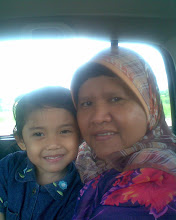skip to main |
skip to sidebar
assigment individu-kilang julies
kilang julies adalah kilang biskut yang terkenal di seluruh malaysia:-
input :- menggunakan bahan-bahan yang telah ditempah khas oleh kilang julies untuk membuat biskut dan mengikut prosedur yang telah ditetapkan oleh sesetengah syarikat yang berkenaan.bahan-bahan tersebut telah disenaraikan sendiri oleh kilang julies seperti pembungkus biskut,bahan-bahan membuat biskut,peralatan membuat biskut dan lain-lain lagi.
proses :- proses membuat biskut menggunakan peralatan yang canggih seperti mesin bancuh digunakan untuk membuat biskut seperti menguli,mengacau dan sebagainya,mesin bentuk biskut digunakan untuk membentuk mengikut acuan yang telah ditetapkan,pembakar biskut adalah selepas semua proses biskut telah habis dilakukan perlu membakar biskut mengikut masa dan suhu yang telah ditetapkan,selepas itu membungkus biskut di dalam bekas yang telah ditetapkan contoh plastik khas,tin atau bekas.
output :- menghantar produk kepada pelanggan tetap seperti shopping complex,kedai-kedai besar.kedai-kedai runcit dan yang berkenaan.selain itu julies eksport produk ke luar negara.
feedback :- jika produk rosak atau tidak mengikut tempahan produk tersebut akan dihantar ke kilang untuk dibuat semula.
pemegang saham julies akan dikongsi mengikut keuntungan setiap bulan,pelanggan tetap julies akan terus menjadi pelanggan mengikut kontrak ade 5 kategori biskut:-- assorted
- love letters
- crackers
- sandwich
- wafer/cookies/pie/waffles/others
ASSIGMENT INDIVIDU (TRANSACTION PROCESSING SYSTEM)
Components of a TPSThe components of a TPS include hardware, software and people. The most important component of a TPS are people. Without people the system does not have customers and without customers it does not have a funtion to perform. People in a TPS can be divided into 3 categories: users, participants and people from the environment.
Users:
The users are people employees of the company who own the TPS. They will use it to provide information information about the system but will not enter data themselves. The information they provide from the TPS may be used to provide inputs for other information systems such as stock control, marketing etc...
Participants:
Participants are direct users of the system. These are the people who will enter the data. They include data entry operators, customer service operators, people working at checkouts and anyone carrying out the tasks required to process the data.
People From The Environment:
These are people who do not directly work for the company but people off the street who sometimes require the services of a TPS as they enter transactions and validate data such as a customer withdrawing money from an ATM.
CONTOH TPS
Credit Card TransactionsCredit card transactions on the internet are very unusual because they appear real time but in fact are actually batch. Huh? Seems strange doesn't it. But in reality the only real time transaction is the check that is made to ensure that the card is current, and is not listed as lost, stolen, cancelled or over the limit. The transaction i8s actually processed as a batch at a later stage. Of course there are still manual credit card transactions which are entered into the TPS. these transactions may take from hours to weeks before they are processed. The manual aspects to online credit card transactions bring in issues of security (credit card fraud, identity theft), privacy (personal details can be read) and ethical issues.
MIS (Management Information Systems)
Management Information Systems provide information to managers of an organisation. This relates to reports, statistics, stock inventories, payroll details, budgets or any other details that assist managers with running an organisation. An EIS, executive Information System is a form of MIS designed for upper management and provides information which might help them make decisions ona strategic level about future directions or issues concerning managers.
There are a range of different reports that help managers make predictions and help manage a company including:
Scheduled Reports: reports which are generated on a regular basis
Forecasting Reports: used to help make predictions about trends
On-demand Reports: generated on request to meet specific needs
Exception Reports: To report unexpected occurences
MIS and EIS are really specialist examples of Decision Support Systems (DSS)
DSS (decision support systems)Decision Support Systems are created to help people make decisions by providing access to information and analysis tools. many stockbrokers now use programs that will automatically put in requests to sell shares once they reach a certain price (either high or low). A DSS creates a mathematical model of the system which helps decison making about actions affecting a person organisation. Another example of a decision support system is the simple analysis tools that banks use to help formulate loans for prospective customers. A DSS allows the users to pose what-if questions and by changing a number of variables and then find out what the outcomes would be. In the home loan DSS customers can analyse how paying off more each pay would affect their loans, how a different type of loan may make it easier to make ends meet and by so doing tailor the loan to suit the customer.
A DSS depends upon the accuracy of the maths involved in creating the model and the ability of the user to accurately interpret the resulting data.
Data Mining is used to find relationships and patterns amongst the data transaction data stored.





No comments:
Post a Comment